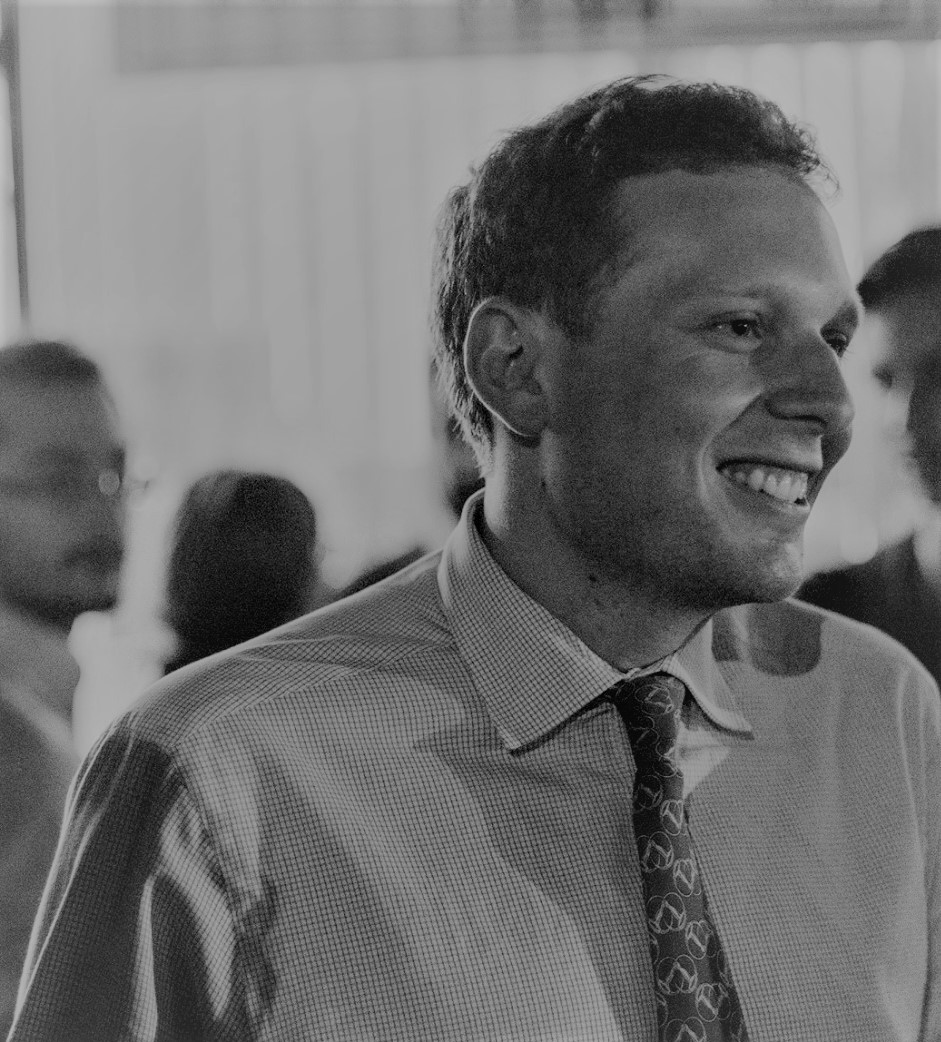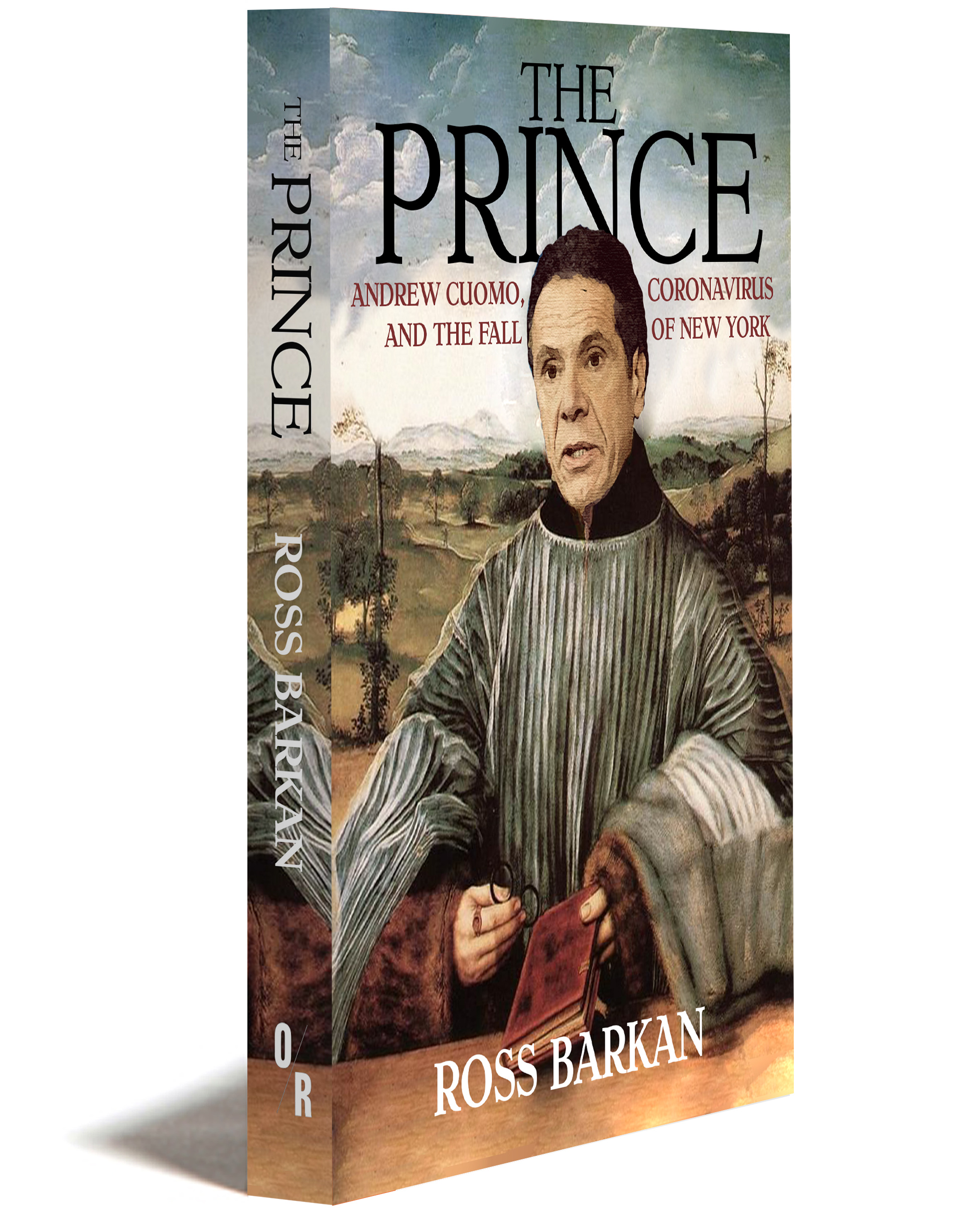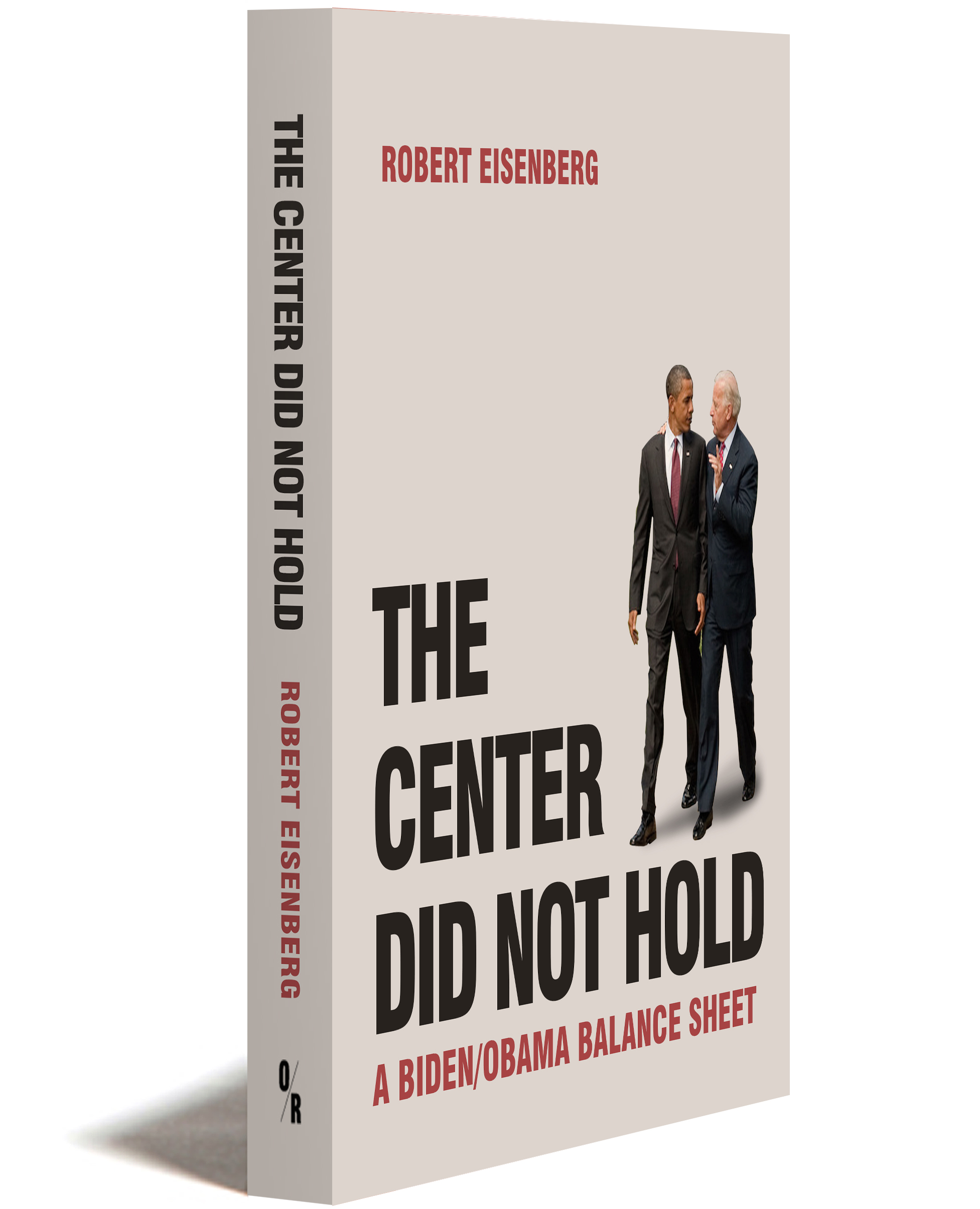The Prince
ANDREW CUOMO, CORONAVIRUS, AND THE FALL OF NEW YORK
“One of the sharpest state policy minds I know." —Alexandria Ocasio-Cortez
“A writer with real literary flair. Like I.F. Stone, Barkan works independently with a left point of view, but it's his shoe leather, his working the phones and hitting the street, that's invaluable because, sadly, it's so scarce.” —Christian Lorentzen
“The most astute observer of… Cuomo and his failures since the very beginning.” —Krystal Ball
“A damning political polemic of a controversial administration mired in failed leadership... In lucid, declarative prose... [Barkan] convincingly debunks Cuomo’s ‘false narrative of triumph’ and, in exacting detail, reveals the corrupt side of present-day New York government.” —Kirkus Reviews
“In this excoriating takedown, [Barkan] argues that praising New York governor Andrew Cuomo’s handling of the Covid-19 pandemic is akin to commending Nero for fiddling while Rome burned… Enriched by the author’s deep knowledge of New York politics and sharp parsing of facts... this exposé delivers a knockout punch.” —Publishers Weekly
“A swift and devastating read. Barkan writes fluently, marshals facts persuasively, and foregrounds the power-obsessed Cuomo’s contempt for the powerless.” —The Nation
“Assiduous…[Barkan] commands a deep expertise... and he’s already written an entire book about a truth that many in the press are only now admitting.” —Jacobin
TweetAbout the Book
Governor Andrew Cuomo, scion of Mario Cuomo, is today as famous as his father, also a governor of New York state for three terms. Like Robert Moses, he is one of New York’s great and infamous power brokers. Though initially lavishly celebrated for his handling of the coronavirus pandemic, not least by himself, it is now apparent that Cuomo’s management of the crisis was a juddering and fatal failure. Thousands died because, ignoring the advice of experts, he shut down too late and returned still sick patients to nursing homes. The crisis was intensified by his previous commitment to austerity, which saw the slashing of funding to hospitals.
A vital riposte to Cuomo’s recently published book about the pandemic, now increasingly derided as self-serving and deceitful, The Prince is a searing indictment of Cuomo’s handling of coronavirus and his time overall in the highest office of the state.
206 pages • Paperback ISBN 978-1-68219-410-2 • E-book ISBN 978-1-68219-254-2
About the Author

Ross Barkan teaches journalism at NYU and St. Joseph’s College, Brooklyn. He writes regularly for The Guardian and Jacobin, and has contributed to a range of other publications including The New York Times, The New Yorker and New York magazine. Working as a City Hall reporter, he has written frequently on New York state politics, covering Cuomo for the last eight years. His novel, Demolition Night, was published in 2018.
Read an Excerpt
On a warm day just before the start of summer, Governor Andrew Cuomo addressed the people of New York State and the nation for the 111th consecutive day. He was alone this time, not confining himself to a room with journalists or lecturing in front of PowerPoint slides. There were no celebrities to flank him. In a pale tie and dark suit, a photograph of his three daughters framed just to his right, Cuomo spoke with the emotion of a man who had witnessed catastrophe but conquered it completely.
“Over the past three months we have done the impossible,” Cuomo said. “We are controlling the virus better than any state in the country, any nation in the globe. I am so incredibly proud of what we all did together and as a community. We reopened the economy and we saved lives—because it was never a choice between one or the other. It was always right to do both.”
The governor, speaking behind his desk on live television, did not take questions. He didn’t have to. Among most of those watching—the operatives, the aides, the reporters, the enormous, reverential public—there was the feeling of a job well done, a crisis now in retreat. On that Friday, with the temperature nearing 90 degrees in the state capital of Albany, the number of people hospitalized was 1,284, compared to the more than 18,000 at the peak of the outbreak. “I thought about it every day as climbing a mountain. The Mount Everest of social challenges,” Cuomo said.
The address was relatively brief, clocking in at about nine minutes and fifteen seconds, and it closed with a somber yet celebratory video slideshow overlaid with narration from the governor himself. Images flashed across the screen: Cuomo, sepia-toned, with his top aide, Melissa DeRosa. Cuomo, huddled with tough men in camouflage. A whiteboard scrawled with facts about the virus. A boy removing one mask to display another mask, a message in marker combining on each:We Are All NY Tough.
Men and women appeared in masks. Others cheered from rooftops and balconies. “We have the lowest rate of transmission,” came Cuomo’s voice, the string music rising. “The phased reopening is working. Stay the course.”
Nowhere in the video came the death toll. This wasn’t a surprise. It was a day for valedictions, for aspiration and ultimately relief. The dreaded virus was raging elsewhere. It was done, it seemed, with New York. For Cuomo, once a politician who could spend weeks without addressing a single reporter, it was a special kind of validation, the type he had been seeking in a lonely decade in one of the nation’s most powerful perches.
Through all the triumphs, the failures, and the late-night rage channeled across telephone lines, Cuomo seemed to be a man cursed to govern in his father’s shadow, more feared than loved. He rarely shook hands at parades or rode the subway with the average commuter. Until 2020, he was not famous in any conventional sense, not in the currency of new media, never lodged too deeply in the consciousness of the state he had controlled since 2011.
Yet by June 19th, the coronavirus briefings had drawn nearly 60 million online views, on par with the music videos of mid-level pop stars. Cuomo’s favorability rating had ranged as high as 77 percent.
The 111th press briefing would be the last regular daily briefing of the coronavirus pandemic, Cuomo had declared earlier that week. Though he inevitably would need to address the public again. He had set or broken a record no one knew existed, appearing day after day on the television screens of a terrified public hungry for guidance. Donald Trump, another Queens native who had once been a Cuomo donor, was incapable of providing it in the White House, where he passed the days in a fugue of rage and idiocy.
Cuomo was the contrast, hurling bare facts at his viewers and sternly comforting them, like a father huddling his brood in the London Tube during the Blitz. He spoke of his elderly mother and his loving daughters, invited up Rosie Perez and Chris Rock, unveiled a wall of colorful cloth face masks, and once took a nasal swab test for all to see.
We had all been in this together. The journalists, tasked with covering the briefings typically staged in either New York City or Albany, reflected on what they had experienced, seated with Cuomo as he became a national phenomenon. Most of those who had covered the governor for a long period of time developed newfound appreciation in this period, praising him as columnists and pundits further removed from the Albany fray had done for months on end.
Deeming it a “remarkable run,” the New York Times’ Albany bureau chief, Jesse McKinley, wrote that he “thought the pleas for unity and understanding seemed genuine.”
“It seemed telling, too, that he quoted famous thinkers—Lincoln, Maya Angelou—letting them lend him gravitas,” McKinley continued. “His own truisms he sneaked into briefings by quoting a person who didn’t exist, A.J. Parkinson, an inside joke and old trick of his father’s, but also a tactic I found revealing: Here was a man who wanted to make maxims, but didn’t necessarily want to be credited—or criticized—for trying to sound profound.”
The Times journalist wondered in his piece, published on June 14th, if a state that had seen more than 30,000 coronavirus deaths—by far the most in the United States of America, rivaling the death tolls of European nations—could claim any kind of success. But it was a question posed in the eighth paragraph, passed over quickly enough. “Definitive answers won’t be known for years,” McKinley wrote.
But that’s not quite true. A year after the pandemic first struck, the worst in a century, judgments can begin to be rendered. If COVID-19 raged across America, infecting big cities and small towns alike while bedeviling both empirical Democrats and heedless Republicans, there was the inarguable body count: more than 40,000 deaths in New York, far more than most in America.
By the end of 2020, New York’s death rate—like those of a number of American states—had easily surpassed that of Spain and Italy’s, two of the worst coronavirus hotspots in Europe. Only neighboring New Jersey, so closely tied to New York City, had a higher death rate. Jay Inslee, the governor of Washington State and a failed presidential contender, garnered little fame holding down a death rate of 35 per 100,000 people, even though Washington was the original coronavirus epicenter in America. New York, meanwhile, saw 178 per 100,000 people die by December.
There is a strong case to be made that Cuomo’s plaudits are wholly undeserved. At the most crucial point for the preservation of life in the state he governed, Cuomo failed to prevent mass death on a scale never before seen. New York City’s death toll alone surpassed 25,000, more than eight times the dead on September 11th.
How much of this can be joined to the actions taken by Cuomo and his erstwhile ally, New York City Mayor Bill de Blasio? There is no way to attribute a specific number. Trump spent the early months of 2020 downplaying, ignoring, or lying about coronavirus altogether, and failed to scale up an adequate national response. States were left to fend for themselves, federalism at its most dire. No discussion of Cuomo’s leadership can ignore the federal failure. And even well-meaning leaders, as evidenced in Europe, struggled with containing a virus that was so highly contagious, spreading through the most innocent of human interactions.
Those who spend enough time analyzing the Wonderland-quality of New York politics may come away with the mistaken impression that Cuomo and de Blasio were symmetrical combatants, sharing equal blame for New York’s coronavirus carnage. But that’s not right either. Though there is no way to tie individual deaths to one action or another, there is a clear record to suggest Cuomo’s decision-making in late February and early March doomed New York to far more suffering than it should have experienced, particularly when leaders elsewhere tamped down on the initial spread of a virus that was then at its most deadly and physicians and healthcare workers had little understanding of how to treat it best.
In the dark logic of the pandemic year, Cuomo won fabulous praise for being everything he wasn’t: calm, decisive, and trafficking in the worlds of fact and reason. He shut down New York City far too late and, like Trump, dismissed the threat of coronavirus. He mismanaged nursing homes and covered up the true death count there. He failed to quickly release inmates from state prisons as the virus spread unchecked.
Imagine, for a moment, Nero garnering critical acclaim for fiddling as Rome burned.
In the Media
- “The former mayor of the largest city in America should have better things to do — THE PRINCE author Ross Barkan writes for New York Magazine (6/1/2022)
- “New York’s post–Andrew Cuomo governor, Kathy Hochul, has been taking a page from her disgraced predecessor” — THE PRINCE author Ross Barkan writes for Jacobin (5/25/2022)
- “Andrew Cuomo may be gone, his brand of politics lives on in Albany” — THE PRINCE author Ross Barkan writes for Jacobin (4/14/2022)
- “New York’s Left Looks to the Post-Cuomo Era” — THE PRINCE author Ross Barkan writes for Jacobin (4/7/2022)
- “Andrew Cuomo, New York’s disgraced former governor, is hoping to mount a political comeback” — THE PRINCE author Ross Barkan writes for Jacobin (4/4/2022)
- “[Andrew Cuomo’s] name deserves to live on in infamy, an example of what New York suffered but never deserved” — THE PRINCE author Ross Barkan writes for Jacobin (1/11/2022)
- “American Machiavellian: The Rise and Fall of Andrew Cuomo” — THE PRINCE author Ross Barkan interviewed by Current Affairs (10/15/2021)
- “Cuomo’s Ouster May Have Saved Public College in New York” — THE PRINCE author Ross Barkan writes for Jacobin (8/23/2021)
- “The media’s role in the Cuomo myth” — THE PRINCE author Ross Barkan writes for Columbia Journalism Review (8/18/2021)
- “The Quislings of Albany” — THE PRINCE author Ross Barkan featured in The New York Times (8/17/2021)
- “Andrew Cuomo: When the Prince Has No Armor” — Ross Barkan’s THE PRINCE reviewed by Democratic Left (8/17/2021)
- “Andrew Cuomo’s Abuse Was Aided and Abetted Every Step of the Way” — Ross Barkan’s THE PRINCE reviewed by Jacobin (8/17/2021)
- “Andrew Cuomo Didn’t Act Alone” — THE PRINCE author Ross Barkan writes for New York Magazine (8/5/2021)
- “Governor Cuomo’s Woes Will Help Other New York Pols” — THE PRINCE author Ross Barkan writes for the Village Voice (8/5/2021)
- “Andrew Cuomo Is the New Crown Prince of Denial” — THE PRINCE author Ross Barkan writes for The Nation (8/5/2021)
- “Reacting to Andrew Cuomo’s Ridiculous Response to Harassment Report” — THE PRINCE author Ross Barkan interviewed on the Katie Halper Show (8/5/2021)
- “Andrew Cuomo’s Sexual Harassment Investigation” — THE PRINCE author Ross Barkan interviewed on Letters and Politics (8/5/2021)
- “Andrew Cuomo’s Reign Over New York” — THE PRINCE author Ross Barkan interviewed on the Majority Report (8/5/2021)
- “A swift and devastating read. Barkan writes fluently, marshals facts persuasively, and foregrounds the power-obsessed Cuomo’s contempt for the powerless.” — THE PRINCE reviewed in the Nation (7/26/2021)
- THE PRINCE author Ross Barkan interviewed on Breaking Points (7/2/2021)
- “Grading Cuomo’s Pandemic Performance” — THE PRINCE author Ross Barkan interviewed on the Brian Lehrer Show (6/29/2021)
- THE PRINCE author Ross Barkan interviewed on Breaking Points (6/29/2021)
- THE PRINCE author Ross Barkan interviewed on Leonard Lopate at Large (6/29/2021)
- “In this excoriating takedown, [Barkan] argues that praising New York governor Andrew Cuomo’s handling of the Covid-19 pandemic is akin to commending Nero for fiddling while Rome burned… Enriched by the author’s deep knowledge of New York politics and sharp parsing of facts… this exposé delivers a knockout punch.” — THE PRINCE reviewed in Publishers Weekly (6/22/2021)
- THE PRINCE author Ross Barkan interviewed on Democracy Now! (6/22/2021)
- THE PRINCE author Ross Barkan interviewed on FiveThirtyEight (6/22/2021)
- THE PRINCE author Ross Barkan interviewed on Useful Idiots (6/22/2021)
- UPCOMING EVENT: “Live from Kings County” — THE PRINCE official book launch with author Ross Barkan, Assemblymember Zohran K. Mamdani, and special guest Andrew M. Cuomo on 06/24/21 (6/11/2021)
- “The truth about Andrew Cuomo” — THE PRINCE author Ross Barkan interviewed on Behind the News (6/11/2021)
- THE PRINCE author Ross Barkan interviewed on the Katie Halper Show (6/11/2021)
- “Only Letitia James running against Gov. Cuomo in 2022 could unseat him” — THE PRINCE author Ross Barkan writes for the New York Post (6/7/2021)
- “As Soon as COVID-19 Hit, Cuomo Downplayed the Danger” — THE PRINCE excerpt published in the Daily Beast (6/7/2021)
- “[CNN anchor] Chris Cuomo has enabled Andrew Cuomo’s lies and catastrophic missteps for more than a year, helping to mythologize a governor who presided over more than 50,000 COVID-19 deaths.'” — THE PRINCE author Ross Barkan writes for the Daily Beast (5/28/2021)
- “Andrew Cuomo and the Incredible Shrinking Congressional Delegation” — THE PRINCE author Ross Barkan writes for the Village Voice (5/28/2021)
- “A damning political polemic of a controversial administration mired in failed leadership.” — THE PRINCE reviewed in Kirkus Reviews (5/18/2021)
- “Cuomosexual Conversion Therapy” — THE PRINCE author Ross Barkan interviewed on Pod Damn America (5/7/2021)
- “How Cuomo’s bevy of scandals is affecting legislation” — THE PRINCE author Ross Barkan interviewed on Bad Faith (5/7/2021)
- “Scandal-plagued Cuomo and Organized Labor’s Bizarre Silence” — THE PRINCE featured in Strikewave (4/27/2021)
- “A scathing assessment of New York State Governor Andrew Cuomo’s handling of the Coronavirus pandemic.” — THE PRINCE reviewed by historian Chris McNickle on Medium (4/23/2021)
- “Andrew Cuomo Is Clinging to Power and Rewarding His Billionaire Loyalists” — THE PRINCE author Ross Barkan writes for Jacobin (4/9/2021)
- “The Coronavirus is Ravaging New York Again After Cuomo’s Victory Lap” — THE PRINCE author Ross Barkan writes for the Daily Beast (4/1/2021)
- “Andrew Cuomo, the Creepy Tyrant of Albany” — THE PRINCE author Ross Barkan interviewed on the New Republic‘s the Politics of Everything (4/1/2021)
- “Andrew Cuomo’s Fall From Grace” — THE PRINCE author Ross Barkan interviewed on Rising Up (3/19/2021)
- “How One Cozy Relationship Influenced Cuomo’s Covid Response” — THE PRINCE author Ross Barkan writes for the Nation (3/16/2021)
- “There’s a brawl shaping up between two books about New York Gov. Andrew Cuomo” — THE PRINCE featured in the Washington Post‘s Book Club (3/12/2021)
- “Ross Barkan Talks Cuomo Scandals, COVID-19, and How the Governor Blocked Progressive Measures” — THE PRINCE author interviewed on NewsBeat (3/11/2021)
- “Cuomo’s Scandals” — THE PRINCE author Ross Barkan interviewed for Jacobin (3/9/2021)
- “Andrew Cuomo was never a hero. Karma is coming for him, with a vengeance.” — THE PRINCE author Ross Barkan writes for the Guardian (3/9/2021)
- “Silent Cuomo Mired in Twin Scandals” — THE PRINCE author Ross Barkan writes for the Village Voice (3/5/2021)
- “Ross Barkan on the Zero Sum Game That Democrats Don’t Know They’re Playing” — THE PRINCE author interviewed on Trickle-Down Socialism (3/5/2021)
- “Cuomo Was Always New York’s Bad Guy. Here’s Why He Was Finally Exposed.” — THE PRINCE author Ross Barkan writes for the Daily Beast (3/2/2021)
- “Andrew Cuomo Is Finished” — THE PRINCE author Ross Barkan writes on Substack (3/2/2021)
- “Andrew Cuomo is Finished (Or is He?)” — THE PRINCE featured on StreetsBlog (3/2/2021)
- “Andrew Cuomo’s narrative whiplash” — THE PRINCE author Ross Barkan featured in the Columbia Journalism Review (3/2/2021)
- “The Art of Consuming News” — THE PRINCE author Ross Barkan interviewed for the Now Age Press (3/2/2021)
- “Andrew Cuomo’s fall from grace” — THE PRINCE author Ross Barkan interviewed on Today, Explained (2/26/2021)






